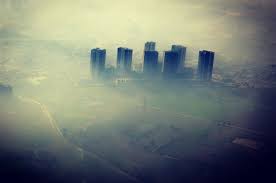ISSS608 2018-19 T1 Assign Qiao Xueyu
|
|
|
|
|
Contents
Background
Air pollution refers to the contamination of the air which contains chemicals, dust or smoke that harms animals and humans. Air pollution has become a common concern that gained wide attention across the world. Many areas have been plagued by air pollution for the past few years.
Sofia, the capital of Bulgaria, is one of the most polluted cities in Europe in terms of air quality. Air pollution norms were exceeded 70 times in the heating period. The whole country of Bulgaria has a high concentration of two particulate matters and the highest concentrations of carbon monoxide and sulfur dioxide and Sofia is not an exception.
The particulate matter such as PM10 and PM2.5 is defined as the fraction of particles with an aerodynamic diameter smaller than respectively 10 and 2.5µm and is the measurement of air quality. Apart from this, air quality is also related to many other factors such as humidity and air pressure.
To identify the air issues of Sofia, we will use Tableau to visualize the air pollution patterns.
Tasks
Task 1: Spatio-temporal Analysis of Official Air Quality
Characterize the past and most recent situation with respect to air quality measures in Sofia City.
- What does a typical day look like for Sofia city?
- Do you see any trends of possible interest in this investigation?
- What anomalies do you find in the official air quality dataset?
- How do these affect your analysis of potential problems to the environment?
Task 2: Spatio-temporal Analysis of Citizen Science Air Quality Measurements
- Characterize the sensors’ coverage, performance and operation. Are they well distributed over the entire city? Are they all working properly at all times? Can you detect any unexpected behaviors of the sensors through analyzing the readings they capture?
- Which part of the city shows relatively higher readings than others? Are these differences time dependent?
Task 3: Analysis of Relationship between Air Quality and Natural Factors
Urban air pollution is a complex issue. There are many factors affecting the air quality of a city. Reveal the relationships between the air quality measure detected in Task 1 and Task 2 and the following factors:
- Local energy sources. For example, according to Unmask My City, a global initiative by doctors, nurses, public health practitioners, and allied health professionals dedicated to improving air quality and reducing emissions in our cities, Bulgaria’s main sources of PM10, and fine particle pollution PM2.5 (particles 2.5 microns or smaller) are household burning of fossil fuels or biomass, and transport.
- Local meteorology such as temperature, pressure, rainfall, humidity, wind etc
- Local topography
- Complex interactions between local topography and meteorological characteristics.
- Transboundary pollution for example the haze that intruded into Singapore from our neighbours.
Tools
- Data Preparation: R
- Data Visualization: Tableau
